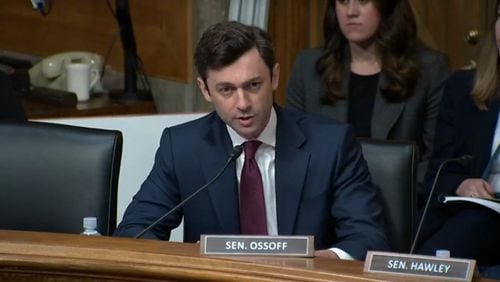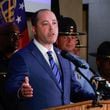Cobb County teacher Dr. Diana Bishop believes Georgia school districts must start to prepare for the possibility they will not reopen in the fall. That, she says, requires better planning and execution of online classes.
In this guest column, Bishop, whose doctorate focused on curriculum studies, urges schools and educators to develop strategies to protect teachers and students and promote learning.
This is a good piece in that Bishop confronts the difficult path ahead, regardless of whether school buildings open or not. If face-to-face classes resume without a vaccine in place, Bishop fears school employees, many of whom fall into at-risk categories, could contract COVID-19.
By Diana Bishop
In January, the first case of coronavirus was confirmed in the United States. A month later, the first death from the disease occurred. Almost immediately, I began to cringe every time a student coughed or sneezed.
As a public school teacher, I’ve watched illnesses spread across my classroom before. After all, we teachers work in a petri-dish. Our crowded classrooms, hallways, and cafeterias are the perfect breeding grounds for disease, but this -- the novel coronavirus -- is different. It is extremely contagious and deadly, particularly for those over the age of 65 and with underlying health conditions such as hypertension, diabetes, asthma, and obesity. By my tally, half my department was at high risk.
This is not surprising. According to the National Center for Education Statistics, more than 30% of American public school teachers are over the age of 50.
This week, New York City announced that 50 employees of its Department of Education have died from the virus; 22 paraprofessionals, 21 teachers, two administrators, two central department employees, a guidance counselor, a food service worker, and a facilities employee.
Let’s face facts. Without antibody tests, effective treatments or a vaccine for COVID-19, students and faculty cannot safely return to brick and mortar schools in the fall. Universities are already anticipating they may have to push in-person classes to 2021 offering only online classes until then. As Steve Clark, spokesman for Oregon State University told CNN, “We can hope for a full return in fall 2020, but hope is not a strategy”
We have only a few months to prepare now to adapt, train, and be ready for students in the fall. Now is the time for us to envision what schools will look like in the near future in our post-pandemic world.
Assume there will be no widespread testing anytime soon
In the absence of coronavirus testing, we simply don’t know who has the virus or who has antibodies for it. Neither do we know how long immunity lasts or, if indeed, the presence of antibodies provides immunity. Fewer than 1% of Georgians have been tested for COVID-19, and, according to Dr. Robert Redfield of the CDC, a significant number of the population who are infected -- as many as 25% or more -- are asymptomatic carriers. Our state is woefully behind in its fight against this virus.
Given these facts, it’s unlikely there will be widespread testing by the time teachers are scheduled to return to schools in late July. Until we have adequate testing, we cannot open this pandora’s box of germs.
The average Georgia elementary school holds 621 children; the average middle school, 750; and the average high school, 1,200 students, according to the National Center for Education Statistics.
More than 20 Georgia high schools have enrollments above 3,000. Class sizes are large, and hallways are crowded making physical distancing impossible under current conditions. We have to think outside the box in order to create space for physical distancing while also ensuring quality education.
Plan on online learning this fall
When the coronavirus hit earlier this year, we had no time to prepare; but we do now. We’ve learned that each student must have access to a computer and to broadband technology. Although the initial investment would be daunting, laptops or iPads would allow students access not only to online lessons, but also e-textbooks, virtual libraries, and other enriching educational resources.
As for broadband access, the Georgia Broadband Deployment Initiative established in 2018 is taking steps to increase access to high speed internet in rural areas where it is estimated that over 25% of residents do not have access to broadband.
In the meantime, innovative communities including Richmond County, Georgia, have installed solar-powered Wi-Fi hotspots in school buses and park them in areas with limited access to fast speed internet. This allows students to stay in the safety of their homes and still have access to Wi-Fi.
Train administrators, teachers, parents, and students
Let’s assume we get the technology lined up and ready to go. Now, we’ve got to establish policies, protocols, and plans for online learning.
In the flurry of establishing online learning management systems, teachers decided for themselves which of the many platforms they planned to utilize. However, this left students (and parents) trying to learn multiple platforms on their own.
Prior to the pandemic, some schools dictated which learning platform must be used; while others allowed teachers to choose which best served their needs. Different hammers serve different jobs and not every learning platform works for each subject matter. This is a decision that can and should be made at the local school level.
Regardless of whether schools meet in physical settings, blended, or 100% online; schools will need to prepare all stakeholders for this transition. Online and in-person training will be essential to the success of online education.
Secondly, school districts must “get” that the online classroom is very different than the traditional brick and mortar school. Yes, the curriculum is the same, but the delivery and methods are different.
School districts that are forcing teachers and students into existing bell schedules, traditional attendance requirements, and administrative “walk-throughs” are demonstrating their ignorance of the realities of online education.
Internet access can drop off, computers can crash, and students may have to share bandwidth or devices with others in the household. Schools moving to online learning must be flexible as to when classes are held and when students access materials. Lessons will still need to be sequential; however, when and where learning takes place need not be.
Think outside the box (or the brick and mortar)
To keep everyone safe and healthy, we’re going to need to continue physical distancing. The best way of course is to close schools. But by this fall (if not before), many families will be struggling financially and feeling pressure to return to work.
In addition, some parents may be concerned about the effectiveness of online learning for their children. Online learning places additional demands on elementary and middle school parents whose children may need more hands-on assistance and attention, and parents and guardians of high school students may find the content of some courses beyond their abilities.
So, how do we keep students and staff healthy and safe? If 100% distance learning is not feasible, we must find other ways to decrease school density. This will require that districts hire more teachers and look for ways to address classroom, hallway, and cafeteria crowding.
In Georgia, state education officials have waived limits on class sizes since 2009 and many schools now exceed the capacity for which they were originally designed. Classes are cramped, hallways are crowded, and restroom facilities are overburdened. If schools are forced to open, the following might provide for a decrease in population density:
In the coming weeks, we’ll know more about the impact of this pandemic, but one thing is for sure, “Hope is not a strategy.” Now is the time to plan for the worst, but hope for the best.
I pray that our governor, state school superintendent, school superintendents, principals and teachers begin planning now for what may be coming this fall.
About the Author







